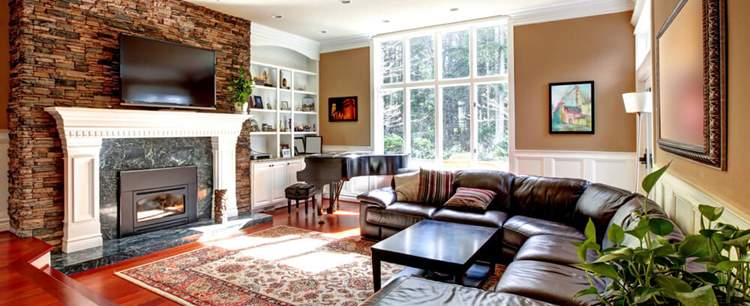Conventionally, a property you own is let to a single tenant or joint tenants, who are given the run of the whole premises.
If you let out just parts of the building to different tenants, making up multiple households – perhaps even just one room at a time – and allow them to share essential facilities such as a kitchen and bathroom and toilet, your let property becomes a House in Multiple Occupation (HMO).
Why convert your property into an HMO?
The simple, primary reason – sheer profitability – is explained in a property investment strategy for landlords published by Property Investments UK. The guide claims that, in many cases, a landlord may expect to double the rental income from an HMO compared with letting the same premises to a single tenant.
The incomes are achievable because of the currently strong demand for affordable housing. It is in the nature of shared accommodation – such as an HMO – of course, that rents are more affordable for tenants compared with other property.
Even though rents are more affordable for tenants, landlords also stand to win out because of the increased capacity of shared accommodation and the multiple tenancies of an HMO.
Quite simply, it is a win-win situation for both landlord and tenant. Before you decide to convert your property in to an HMO, there are certain things you need to consider. This is by no means an exhaustive list, but highlights some of the key considerations.
HMO insurance
As our product pages warn, if you are intending to convert your property into an HMO, you must also remember to arrange specialist HMO insurance – to protect your investment in both the structure and fabric of the building and the buy to let business itself.
To make sure you enjoy the benefits of insurance cover, you must arrange specifically-targeted HMO insurance – which recognises the particular risks and perils associated with such tenancies – rather than any regular landlord insurance policy, and certainly not a home insurance policy designed for the owner-occupier.
Legislation relating to HMOs
Your need for specialist HMO insurance stems from the fact that, in let property terms, an HMO is a special case in practically every way.
The fact that shared facilities and amenities mean that more people may be accommodated under the same roof increases the risk of overcrowding, unsafe or unhealthy living conditions, and the danger of accidents (from fire or an escape of water, for example).
Those risks are also reflected in the legislation and local authority licensing controls applied specifically to HMOs. The housing charity Shelter identifies several of them:
- the HMO landlord has a legal responsibility to ensure that the premises are not overcrowded;
- there must be sufficient kitchen, bathroom, and toilet facilities for the total number of people living in the building;
- those shared facilities and other communal areas must be kept in a good state of repair and maintained in a clean and orderly fashion;
- fire doors are typically required in HMOs:
- the landlord must make sure that there are enough rubbish and bin bags for use by all the tenants in the HMO; and
- in common with any other type of let property, gas supplies and appliances must be checked and certified safe every year, electrics checked every five years, and all national and local fire regulations strictly adhered to.
Prospective HMO landlords will also need to factor in associated costs for locks for each bedroom and emergency lighting for fire safety etc.
Licensing
If your HMO houses more than five tenants, living in more than one household, the dwelling is formally designated a large HMO. As the landlord of a large HMO, you must apply to your local council for a licence to operate the dwelling as such – or face an unlimited fine for running an HMO without the necessary licence.
Licences are issued in an attempt to ensure that the HMO itself meets the basic required living standards to protect the health and safety of its tenants and that the landlord is a “fit and proper person” to operate such a letting (in other words, that the landlord has no prior convictions for breaches of any housing laws or infractions of the regulations relevant to private rented accommodation).
Local authorities can also require smaller HMOs and their landlords in selected areas also to require an operating licence.
Minimum room sizes
Another consideration when converting a house in to an HMO is room sizing. To illustrate how licensing has been put in place to help maintain standards within HMOs, it might be useful to look at one of the mandatory conditions written into any HMO licence anywhere in the country. Those mandatory conditions, set in 2018, impose minimum requirements for the floor areas of individual living spaces. As explained in guidance from Guildford Borough Council, these are that:
- the minimum floor area for one person under the age of 10 is no less than 4.64 square metres;
- for one individual over the age of ten, the minimum is 6.51 square metres and for two people 10.22 square metres;
- no room in the HMO smaller than 4.64 square metres may be used as a bedroom; and
- those minimum requirements cover only the floor area where the head height is at least 1.5 metres.
To help control overcrowding, the HMO licence must also stipulate the total number of people (both over and under the age of ten years) who may occupy the sleeping accommodation in the building.
Converting your property in to an HMO may be lucrative. But before you do so, you do need to be aware of the specific rules, regulations and, health and safety legislation relating to owning and running an HMO.







